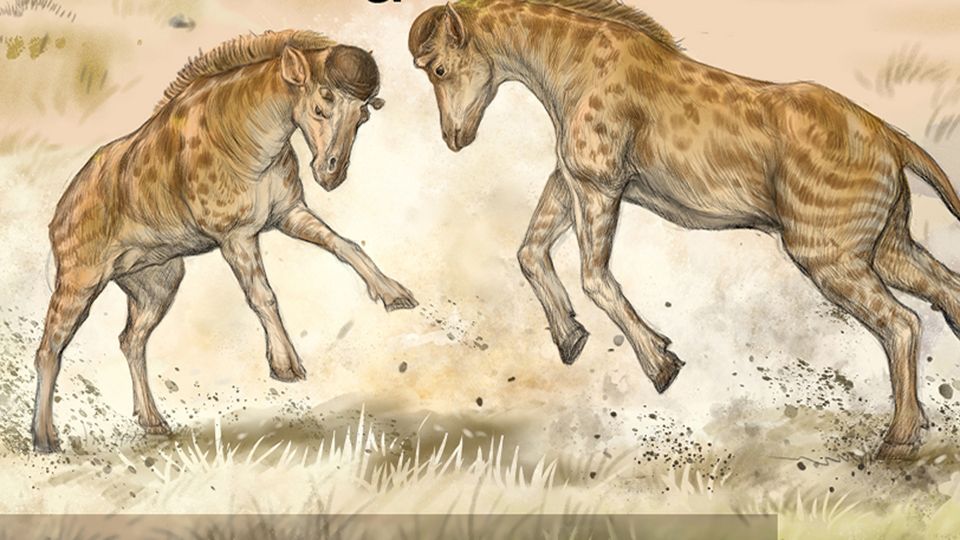Giraffes Evolved Long Necks for “Sexual Combat”, New Study Suggests

Complete the form below to unlock access to ALL audio articles.
A study looking in depth at the unusual fossils of early giraffes has provided a new perspective on their extremely long necks. While it is commonly believed that giraffoids’ necks evolved for more efficient treetop leaf eating, this new research, published in Science, suggests that they may have instead been selected for as an advantage in a violent sexual fight-off. The study authors refer to this as “necking” combat.
Ancient fossils reveal neck combat
The characteristic lengthy neck of the modern giraffe has long been considered a classic example of adaptive evolution and natural selection since Charles Darwin first penned the concepts. The giraffe, which is the tallest land animal and largest ruminant on Earth, is usually thought to have developed a longer and taller neck as a way of outcompeting shorter leafeaters for the treetop shoots of the African savannah.
Nevertheless, a second argument has suggested that giraffes’ monster necks may have evolved out of a sexual selection process. This “necks-for-sex” hypothesis has received a boost from the new study coauthored by Shiqi Wang, an associate professor at the Chinese Academy of Sciences. Wang and colleagues examined the fossils of a newly found ancient giraffe species, Discokeryx xiezhi, which lived 17 million years ago.
The fossils indicate that this ancient giraffoid species had helmet-like headgear and particularly complex head and neck joints. According to the authors, these peculiar morphological characteristics show an adaption for violent head-butting behavior. Moreover, tooth enamel isotope data from these fossils suggest that the species also likely filled a specific ecological niche in the ecosystem unavailable to other contemporary herbivores.
““Necking” combat was likely the primary driving force for giraffes that have evolved a long neck, and high-level browsing was likely a compatible benefit of this evolution. The ecological positioning on the marginal niches promoted the intensive sexual competition, and the fierce sexual combats fostered extreme morphologies to occupy the special niches in giraffoids,” write the authors.
The research team’s overall conclusion is that early giraffoid evolution is more complex than initially thought, but more work will be required to separate out the relative contributions of sex and leaves to the giraffe’s unique neck.
Reference: Wang S, Ye J, Meng J et al. Sexual selection promotes giraffoid head-neck evolution and ecological adaptation. Science. 2022;376:6597. doi: 10.1126/science.abl8316
This article is a rework of a press release issued by the Chinese Academy of Sciences. Material has been edited for length and content.


